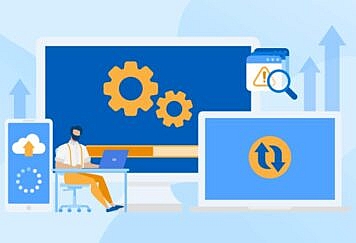Lean manufacturing is also called just-in-time production, and its primary purpose is to get rid of waste materials in the production process, optimize productivity, and reduce market time. Lean productions aim to deliver value to the client and have tools to make it more efficient.
Lean was created originally by Toyota to eliminate inefficiency and waste in manufacturing operations. This process has become widespread and is being embraced in different sectors globally.
Lean production’s main goal is to eliminate waste and other non-value components. Elements contain a particular amount of waste unless they undergo this process. Lean manufacturing has massive efficiency improvement when done correctly, and below, we discuss the best tools in the Lean Manufacturing Production System.
-
Kanban
Kanban is a lean production method that started as a scheduling system for workflow management and Lean manufacturing. The word “Kanban” means “sign” in Japanese, and its main features are Kanban cards and visual boards.
Benefits
Kanban allows users to optimize workflows and accomplish more. The main benefits of Kanban to your enterprise are;
- Better flow visibility
- Improved productivity
- Improved quality
- Increased team focus
- Increased customer satisfaction
- Improved team focus
- Reduced waste.
Challenges Facing Kanban
Incorporating Kanban into your company is challenging due to many reasons, and below, we discuss some;
- Team resistance
- Lack of involvement
- Lack of management support
- Lack of collaboration
- Inconsistent practices.
Kanban Examples
- Software development
Kanban boards enable software teams to prioritize their work and organize better. This reduces unwanted waste while optimizing delivery. The proper identification of workflow policies increases transparency and strengthens team collaboration.
- Manufacturing
Kanban software lets manufacturing organizations track the supplier’s work efficiently with the help of a Kanban board. This practice improves coordination in various subunits.
- Telecommunications
The communication and support teams can prioritize massive work amounts easily and use the Kanban method to track support tickets. The Kanban board ensures better time-management control by monitoring every Kanban’s card cycle.
-
5S
5S is a Lean mode made up of 5 consecutive steps, and it enables teams to organize their work to improve efficiency. The 5S are derived from Japanese words; Seiton, Shitsuke, Seikutsu, Sseiri, and Seiso.
Benefits
The 5S is beneficial in several industries and is applied in manufacturing work. Below are the main benefits of the 5S;
- Separate necessary and unnecessary tools to be used by your team
- They minimize waste activities by organizing your work environment
- Standardize work
- They withhold any changes and push you towards continuous improvement
- They keep your tools in the right state.
Challenges
All managers and employees face difficulty when implementing this process. Here are some;
- Program resistance because of the culture change and the creation of new routines.
- Lack of team commitment when implementing the 5S
- Resistance to acknowledging the “Normal” definition where everything is organized well.
- Lack of support from the management.
Examples
- Manufacturing
The 5S enables the production environment to be more efficient by eliminating unwanted tools from the work area.
- Engineering
The 5S makes sure that engineering teams follow the needed steps by standardizing the work process. These steps are used when handling a particular inquiry or problem.
- Software development
THE 5S helps teams prioritize tasks needed by the client, separating important from wasteful steps.
-
Kaizen
This is a Lean concept that targets to improve all business functions continuously. Kaizen means “The Act of rectifying bad points” in Japanese, and you must adopt self-criticism practice to achieve Kaizen.
Benefits
The traditional Kaizen ideas have five tenets; teamwork, quality, improved morale, personal discipline, and suggestions for improvement. These tenets cause the following outcomes;
- Standardization
- Good housekeeping
- Waste elimination or economic efficiency.
Kaizen is integrated into its culture to make employees more familiar with it.
Challenges
The main challenges faced after implementing Kaizen implementation include;
- Lack of efforts from the management to install a continuous improvement culture. These efforts include not acknowledging employee feedback.
- False quick result expectancy
- Organizational change resistance.
Kaizen Examples
- Manufacturing
Kaizen culture lets manufacturers enhance their operations by eliminating production issues and lowering workers’ motion.
- Healthcare
Continuous improvement is implemented in the health sector in different ways. Such ways include optimizing patient records and reducing waiting times.
-
Gemba Walk
Gemba Walk is a Lean production technique referring to supervisors observing the tasks at hand. The term “Gemba” originates from Japan, and it means “the real place.”
This Lean tool entails the following concepts;
- Frequently walk and study the work area to discover wasteful activities
- Communicate actively to identify the problematic places
- Perform the said activities with respect to the workers.
Benefits
The Gemba Walk has the following advantages;
- It identifies problematic areas, meaning faster resolutions
- Leaders and managers are empowered to make better relationships with employees and customers
- Direct strategic observation communication causes better employee engagement.
Challenges
The Gemba Walk tool implementation has the following challenges;
- It assesses personal performance leading to employee resistance
- It causes a misunderstanding if its purpose is not communicated in time
- Instant change application does not have a detailed analysis, creating uncertainty and confusion.
Examples
Below are the top applications of the Gemba Walk tool.
- Manufacturing
A consistent Gemba Walk creates an opportunity for direct communication while receiving important input concerning the problematic places in the procedure. Line operators also receive necessary information on the organization’s plans, increasing employee motivation.
- Customer service
Gemba Walk helps customer service teams to detect the process causing excess SLA when handling customer inquiries. For example, a successful work process observation might show that representatives take a lot of time turning the request into a support ticket.
- Software engineering
Performing Gemba Walks when developing software lets senior management identify improvement areas quickly by following the engineer’s advice closely. This process helps to enhance work processes and also fosters collaboration at different organizational levels.
Final Thoughts
Lean manufacturing has become a standard procedure in many organizations today, and it is hard not to see why. It has many advantages like reduced costs and fast delivery times. This article has discussed the top Lean tools, and you can reach out for more information.
Kindly reach out to know the Lean Maintenance Meaning. Follow TechStrange for more Technology, Business, and Digital Marketing News.





